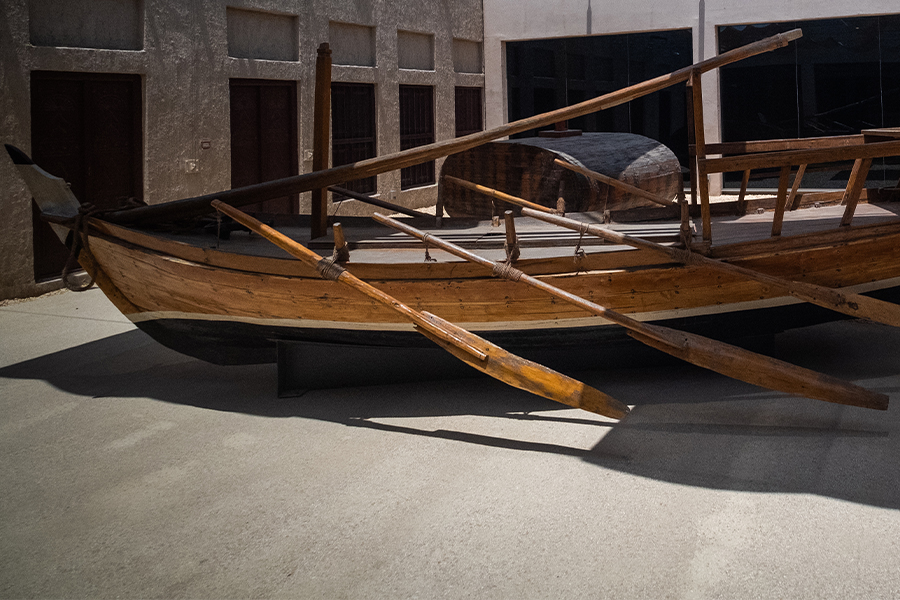Boat building
Dhows were the primary means of communication between the coastal communities spread across the Arabian Gulf, the Red Sea and the Indian Ocean as they helped to further openness between cultures and interaction between civilizations. Known to people of the Arabian Gulf as mahml, from the Arabic root hamal meaning ‘bearer’, the foreign word dhow now commonly refers to the wooden sailing ship powered by quadrilateral settee and triangular lateen sails that was the product of the wider Indian Ocean environment, culture and economy. The Gulf dhows have been used throughout history until the mid-20th century. As recorded in Arabic illuminated manuscripts of the 13th century or in writings of Arab travelers such as Ibn Battuta and Bin Majid in the 14th and 15th centuries, dhows evolved as seagoing shops over time. Dubai builders constructed their vessels from planks, in various sizes and shapes depending on the purpose of use. Some were used for fishing, others for pearling, especially in the 19th and early 20th centuries, and some were used in maritime trade.


